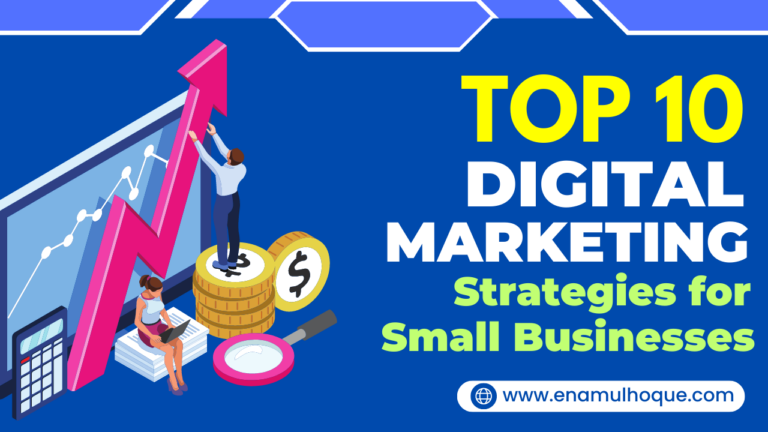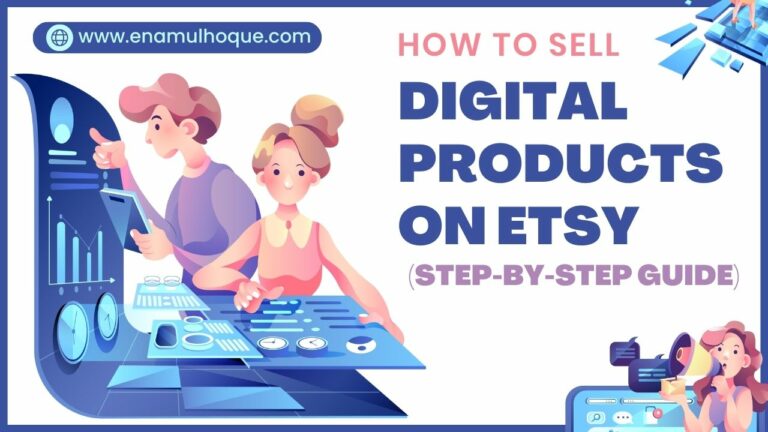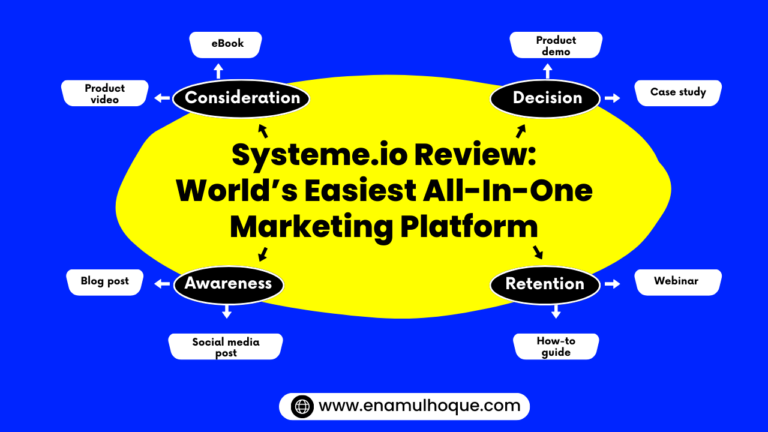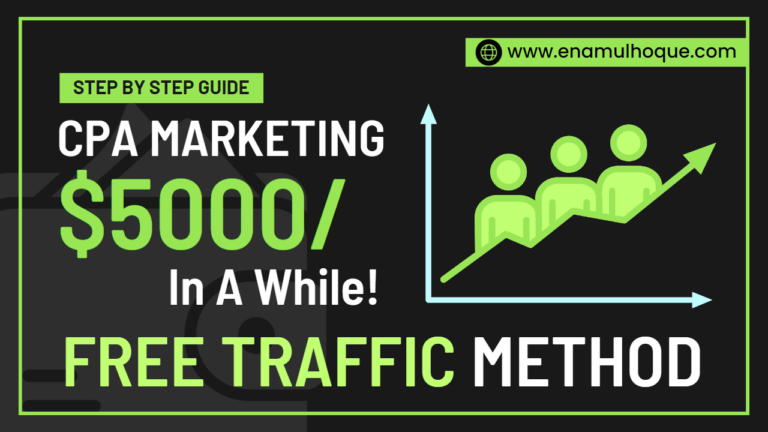Are you ready to dive into the world of digital marketing, but not sure where to start? Don’t worry, you’re not alone. With so many different strategies and platforms to choose from, it can be overwhelming for beginners. But fear not, dear reader, for this beginner’s guide to digital marketing is here to help you get started and set you on the path to success.
Digital marketing is all about promoting your business, product or service using digital channels such as search engines, social media, email, and more. It’s a rapidly evolving field that requires a mix of creativity, data analysis, and technical know-how. But even if you’re not a tech guru or marketing whiz, there are plenty of things you can do to get started and make a meaningful impact.
In this guide, we’ll cover the basics of setting goals for your digital marketing campaign, building your online presence, creating content that converts, and launching your first digital marketing campaign. Along the way, we’ll share tips and tricks to help you succeed, and maybe even crack a joke or two to keep things light-hearted. So, grab a cup of coffee and get ready to take your first steps into the exciting world of digital marketing.
My Best Recommended & Proven Way to Make $100-$500 Per Day – Watch THIS FREE Video to START >>

Step 01: Setting Goals for Your Digital Marketing Campaign
Our beginner’s guide to digital marketing is all about setting goals for your digital marketing campaign. Without clear objectives, your marketing efforts will lack direction and focus, making it difficult to measure success. In this section, we’ll show you how to define your target audience, business objectives, and key performance indicators (KPIs) to help you stay on track.
Step 02: Building Your Online Presence
Building your online presence is a critical aspect of digital marketing, and it all starts with creating a website. Your website is your online storefront, and it’s where you’ll direct potential customers to learn more about your business, products, and services. In this section, we’ll cover the basics of website creation, as well as other online assets that are crucial for building your online presence.
Step 03: Creating Content that Converts
Creating content that converts is all about developing messaging that resonates with your target audience and motivates them to take action. Whether you’re creating blog posts, social media updates, or email newsletters, your content should be informative, engaging, and focused on solving your audience’s pain points. In this section, we’ll cover the basics of creating content that converts and drives results for your digital marketing campaigns.
Step 04: Launching Your First Digital Marketing Campaign
Launching your first digital marketing campaign can be an exciting and daunting task. But with a solid plan in place, you can achieve your goals and drive results for your business. In this section, we’ll cover the basics of launching your first digital marketing campaign and achieving success.
My Best Recommended & Proven Way to Make $100-$500 Per Day – Watch THIS FREE Video to START >>
Digital Marketing Demystified: Understanding its Importance and What You Need to Know to Get Started
Digital marketing has become an essential aspect of any business’s success, and it’s no wonder why. With over 4.9 billion internet users worldwide, digital marketing provides businesses with an unprecedented opportunity to reach their target audience and achieve their goals.
Whether you’re looking to drive traffic to your website, increase sales, or improve brand awareness, digital marketing can help you get there. But with so many different strategies and platforms to choose from, it can be overwhelming for beginners to know where to start. That’s where this beginner’s guide comes in – we’ll take you through the basics of digital marketing and give you the knowledge and confidence you need to get started.
In this guide, we’ll cover the essential building blocks of digital marketing, starting with setting goals for your campaign. Without clear objectives, your marketing efforts will lack direction and focus, making it difficult to measure success. We’ll show you how to define your target audience, business objectives, and key performance indicators (KPIs) to help you stay on track.
Next, we’ll cover the importance of building your online presence. A strong online presence is crucial in today’s digital age, and we’ll show you how to create a website, develop social media profiles, and set up your Google My Business listing. These online assets are the foundation of your digital marketing strategy and can help you attract and retain customers.
Creating content that converts is another essential aspect of digital marketing, and we’ll share tips for developing a content marketing strategy that resonates with your target audience. We’ll cover topics such as crafting compelling messaging, creating shareable content, and optimizing your content for search engines (SEO).
Finally, we’ll show you how to launch your first digital marketing campaign. We’ll guide you through the process of choosing the right channels for your business, crafting your marketing message, and measuring and analyzing your results.
So, whether you’re a small business owner looking to grow your online presence or a marketer just starting in the field, this guide is for you. We hope to provide you with a solid foundation of digital marketing knowledge that will help you achieve your business goals and thrive in today’s digital landscape.
Setting Goals for Your Digital Marketing Campaign
The first step in setting goals for your digital marketing campaign is to identify your target audience. Who are you trying to reach with your marketing messages? What are their needs, wants, and pain points? Understanding your target audience is crucial for developing messaging and campaigns that resonate with them.
Next, you need to define your business objectives. What are you hoping to achieve with your digital marketing campaign? Are you looking to increase website traffic, generate leads, or boost sales? It’s essential to have specific, measurable goals in mind to help guide your marketing efforts.
Once you’ve identified your target audience and business objectives, you can start to determine your KPIs. KPIs are metrics that you’ll use to track and measure the success of your digital marketing campaign. They can include metrics such as website traffic, click-through rates, conversion rates, and more.
Some examples of KPIs include:
Website traffic: The number of visitors to your website over a specific period.
Conversion rate: The percentage of website visitors who take a specific action, such as filling out a form or making a purchase.
Cost per lead: The cost of acquiring a new lead through your marketing efforts.
Customer acquisition cost: The cost of acquiring a new customer through your marketing efforts.
By defining your target audience, business objectives, and KPIs, you can create a digital marketing campaign that’s focused, measurable, and effective. In the next section of our guide, we’ll cover how to build your online presence and set yourself up for success in the digital landscape.
Building Your Online Presence
Second step in building your online presence is to create a website. Your website should be visually appealing, easy to navigate, and optimized for search engines (SEO). It should also be mobile-friendly since over half of all internet traffic now comes from mobile devices.
Once you’ve created your website, it’s time to develop your social media profiles. Social media is a powerful tool for building brand awareness and engaging with your target audience. Choose the platforms that your target audience is most active on and create a consistent brand voice across all of your profiles. Regularly post updates, engage with your followers, and use social media to promote your products and services.
Another critical component of building your online presence is setting up your Google My Business listing. Google My Business is a free tool that lets you manage your online presence across Google, including Search and Maps. By claiming your listing and adding your business information, you can help potential customers find you online and learn more about your business.
Creating and sharing content is also an essential part of building your online presence. Content marketing involves creating and sharing valuable, relevant, and consistent content to attract and retain your target audience. Your content should align with your brand messaging and be tailored to your target audience’s needs and interests.
Finally, it’s essential to track and analyze your online presence’s performance. Use tools like Google Analytics to track website traffic, social media metrics, and other KPIs. This data can help you make informed decisions about your digital marketing strategy and identify areas for improvement.
By building a strong online presence, you can attract and retain customers, increase brand awareness, and achieve your digital marketing goals. In the next section of our guide, we’ll cover how to create content that converts and drives results.
My Best Recommended & Proven Way to Make $100-$500 Per Day – Watch THIS FREE Video to START >>
Creating Content that Converts
Third step in creating content that converts is to understand your target audience’s needs, wants, and pain points. What problems are they trying to solve, and how can your products or services help them? Use tools like buyer personas, surveys, and customer feedback to gain insights into your target audience’s motivations and preferences.
Next, you need to develop a content strategy that aligns with your business objectives and target audience’s needs. Your content strategy should include a content calendar, outlining the topics and formats of the content you plan to create and share. It should also identify the channels you’ll use to distribute your content, such as your website, social media profiles, or email newsletters.
When creating your content, focus on providing value to your audience. Your content should be informative, engaging, and focused on solving your target audience’s pain points. Use a mix of formats, such as blog posts, videos, infographics, or podcasts, to keep your content fresh and varied.
It’s also essential to optimize your content for search engines (SEO). This involves incorporating keywords and phrases that your target audience is searching for into your content. By doing this, you can improve your content’s visibility in search engine results and attract more qualified leads to your website.
Finally, make sure to include calls to action (CTAs) in your content. CTAs are prompts that encourage your audience to take a specific action, such as filling out a form, making a purchase, or downloading a resource. By including CTAs in your content, you can drive conversions and achieve your digital marketing goals.
By creating content that resonates with your target audience, you can build brand awareness, establish credibility, and drive conversions. In the next section of our guide, we’ll cover how to measure and optimize your digital marketing campaigns for maximum impact.
Launching Your First Digital Marketing Campaign
The last step in launching your digital marketing campaign is to define your goals. What do you want to achieve with your campaign? Are you looking to increase brand awareness, generate leads, or drive conversions? Your goals should be specific, measurable, and aligned with your business objectives.
Once you’ve defined your goals, it’s time to develop a strategy. Your strategy should include a clear understanding of your target audience, the channels you’ll use to reach them, and the messaging that will resonate with them. Use data and insights from previous campaigns, market research, and customer feedback to inform your strategy.
When creating your campaign, it’s important to choose the right channels for your target audience. For example, if your audience is primarily on social media, you may want to focus on social media advertising. If they prefer email, you may want to launch an email marketing campaign. Consider using a mix of channels to reach your audience and keep your messaging consistent across all of them.
When launching your campaign, make sure to test and optimize your messaging, creative, and targeting. Use A/B testing to compare different versions of your ads, emails, or landing pages and identify which ones are performing best. Continuously analyze your campaign’s performance and adjust your strategy as needed to achieve your goals.
Finally, make sure to track your campaign’s performance using metrics like click-through rates, conversion rates, and ROI. This data can help you identify areas for improvement and make informed decisions about future campaigns.
By launching your first digital marketing campaign, you can drive results for your business and achieve your goals. Remember to define your goals, develop a strategy, choose the right channels, test and optimize, and track your performance. With the right approach, you can achieve success and take your digital marketing to the next level.
Conclusion
Congratulations, you’ve made it to the end of our beginner’s guide to digital marketing! We’ve covered a lot of ground, from building your online presence to launching your first digital marketing campaign. By now, you should have a solid understanding of the basics of digital marketing and how you can use it to achieve your business goals.
Remember, digital marketing is a constantly evolving field, and there’s always more to learn. But by following the tips and strategies outlined in this guide, you’ll be well on your way to success.
Here are a few key takeaways to keep in mind:
- Building a strong online presence is essential for success in digital marketing. This includes having a well-designed website, engaging social media presence, and consistent branding.
- Creating content that resonates with your target audience is critical for driving conversions and achieving your goals. Use data and insights to inform your content strategy and make sure your messaging is clear and compelling.
- When launching your first digital marketing campaign, it’s important to define your goals, develop a strategy, and choose the right channels for your target audience. Continuously test and optimize your campaign and track your performance to identify areas for improvement.
- Finally, stay up-to-date with the latest trends and best practices in digital marketing. Attend conferences, read industry blogs, and continue to learn and grow as a marketer.
- We hope you’ve found this guide informative and helpful in getting started with digital marketing. Remember, digital marketing can be a powerful tool for achieving your business goals and driving growth. With the right approach and a willingness to learn, you can take your marketing to the next level and achieve great success.
By following this outline, you can create a comprehensive and informative article that provides value to your readers and helps them get started with digital marketing. Don’t forget to conduct keyword research and optimize your content for SEO to increase its visibility and reach online. Good luck with your article!
My Best Recommended & Proven Way to Make $100-$500 Per Day – Watch THIS FREE Video to START >>
Thank you for taking the time to read my article “A Beginner’s Guide to Digital Marketing: How to Get Started”. I hope it helps! Please share this on your social media if you benefit.







